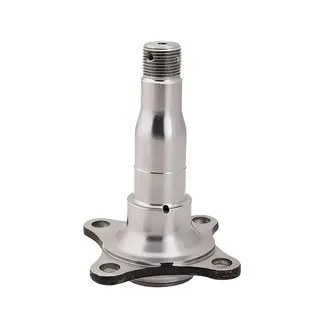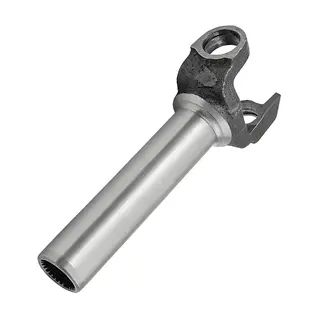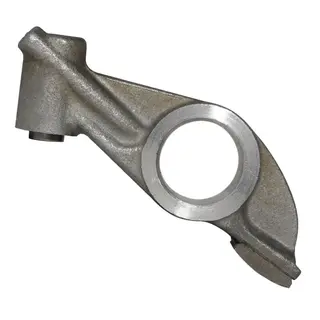In modern industry, metalworking technology plays an indispensable role. Whether it is the tools we use daily or complex and precise mechanical components, their production relies on metalworking processes. Forging and casting, as two main metalworking methods, each have unique process characteristics and wide application fields. This article will explore the principles, advantages, applications, and significance of forging and casting in modern industry.
Forging is a processing method that induces plastic deformation in metal through external forces. It not only changes the shape and size of metals but also improves their mechanical properties. Forging is widely used in industrial production and is an important metalworking process. Next, we will analyze the definition, principles, advantages, applications, and classifications of forging to reveal the science and art behind this process.
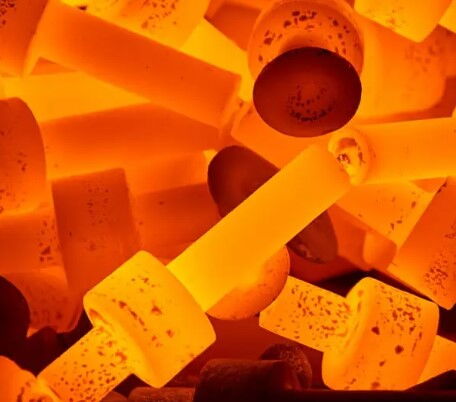
Forging is a metalworking process whose core is applying external forces to induce plastic deformation in the metal material during deformation, thereby changing its shape, size, and microstructure. The purpose of forging can be simply to alter the metal’s shape or to improve the material’s strength, hardness, or other mechanical properties. The basic principle of forging is to use external force to overcome the internal resistance of the material, causing it to deform. This process involves three main physical phenomena: stress-strain curves, plasticity, and recovery. First, by applying external force, the material’s internal stress-strain curve changes, the elastic deformation stage is extended, and it gradually enters the plastic deformation stage. During this stage, the material begins to flow and change shape to adapt to the external force. When the external force disappears, the material gradually returns to its original state; this process is called recovery.
Forging can significantly enhance the strength, hardness, toughness, and wear resistance of metal materials. These improvements are mainly due to changes in microstructure and texture during deformation. The plastic deformation during forging effectively releases internal stress in the material, avoiding or reducing cracks or deformation during subsequent use. Compared with other metalworking processes such as casting or rolling, forging generally requires less labor and equipment, making production costs lower. The metal deformation in forging is uniform, and mold wear is relatively small, helping to extend mold life. Since forging can directly form complex shapes, it provides greater design freedom to meet specific functional requirements.
Forging is used in many fields, including machinery parts, tools, ships, vehicles, aerospace, construction, and energy industries. In machinery parts manufacturing, forging is typically used to produce key components such as gears, shafts, and bearings. In tool manufacturing, forging enhances durability and precision. In construction, forging is used to produce rebar and various structural components. Furthermore, forging has wide applications in aerospace, such as manufacturing aircraft frames and engine parts.
Forging can be divided into open-die forging and die forging based on the processing method. Open-die forging is performed without molds, changing the shape and size of the metal manually or mechanically. Die forging is performed within molds, altering the metal according to the mold shape. Depending on the type of applied force, die forging can be further divided into hammer forging, hydraulic forging, isothermal forging, etc.
After exploring forging, we now look at casting. Casting is another important metalworking method, where metal is heated to a liquid state and poured into molds, solidifying as it cools to form shapes. Casting can produce complex parts, especially components with intricate internal cavities. Next, we will discuss the definition, principles, advantages, applications, and classification of casting.
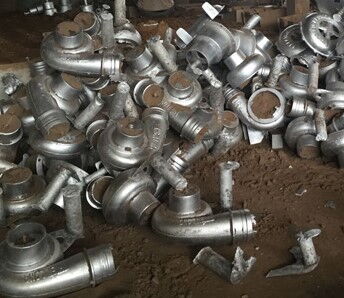
Casting involves pouring qualified liquid metal through a series of transfer tools into mold cavities that match the part’s shape and size. The liquid metal fills the mold cavity under gravity or external forces (such as electromagnetic force, centrifugal force, inertial vibration, etc.) and solidifies upon cooling to produce a blank or part. This method is usually called liquid metal forming or casting. Using liquid metal, complex-shaped workpieces can be produced, regardless of weight (from a few grams to hundreds of tons), at a relatively lower cost compared with other forming methods.
Casting has a range of advantages, making it one of the main methods for producing part blanks. Firstly, casting can produce parts with complex shapes, especially those with intricate internal cavities. Castings can range from a few grams to hundreds of tons, with dimensions from a few millimeters to tens of meters, for example, machine tool beds, internal combustion engine blocks and cylinder heads, valve bodies, housings, and press beams are all castings. Secondly, castings can be made from various alloys, including cast iron, cast steel, alloy steel, copper alloys, aluminum alloys, and more. Casting is especially suitable for brittle metals (like gray cast iron) or alloys difficult to forge or machine. Additionally, casting can be used for single-piece production or batch production. Since the shape and size of castings are close to the final part, machining allowance is small, saving metal and processing labor. Casting equipment is relatively inexpensive, raw materials are low-cost, and scrap metal (like risers, scrap machines, and defective castings) can be reused. Moreover, in most cases, production preparation is simple and the production cycle is short.
Casting is widely used in machinery manufacturing, automotive, shipbuilding, aerospace, construction, and energy industries. For example, machine tool beds, internal combustion engine blocks and cylinder heads, valve bodies, housings, and press beams are castings. In automotive manufacturing, engine blocks and transmission housings are usually produced by casting. In aerospace, some complex engine components and structural parts are also made through casting.
Casting is generally divided into sand casting and special casting. Sand casting is the most common method, where mold sand is compacted to form a mold. Since the mold is destroyed after removing the casting, sand casting is also called expendable mold casting. Special casting includes metal mold casting, pressure casting, investment casting (precision casting), etc. Each method has its unique characteristics and application scenarios.
In this section, we will comprehensively compare these two metalworking processes. By contrasting material selection, processing accuracy, production cost, and application fields, we can better understand their advantages and suitable scenarios.
Forging requires metals with good plasticity to undergo plastic deformation under external forces without cracking. Common metals such as cast iron have poor plasticity and are brittle, unsuitable for forging. Steel and non-ferrous metals like copper, aluminum, and their alloys have good plasticity and are suitable for forging. Casting, on the other hand, can use various alloy materials, including cast iron, cast steel, alloy steel, copper alloys, aluminum alloys, especially brittle metals (like gray cast iron) or alloys difficult to forge or machine.
Forging is a solid-state forming process and is relatively difficult for producing complex-shaped parts, especially those with intricate internal cavities. Casting can produce complex parts, especially with intricate internal cavities. Castings closely match the shape and size of the part, saving material and machining labor. However, casting accuracy is relatively low and usually requires post-machining to achieve higher precision.
Forging generally requires less labor and equipment, reducing production costs. Metal deformation is uniform, mold wear is lower, extending mold life. Casting equipment is low-cost, raw materials are inexpensive, and scrap metal can be reused. Production preparation is simple, and the production cycle is short.
Forging is mainly used for critical parts subjected to high loads and high rotational speeds, such as gears, shafts, and bearings. Casting is widely used for producing complex parts, especially those with intricate internal cavities, such as machine tool beds, internal combustion engine blocks and cylinder heads, valve bodies, and housings.
Next, we delve into the specific processes of these two methods to better understand their operational details in actual production.
The forging process mainly includes the following steps:
Raw Material Preparation: Select suitable metal materials with good plasticity.
Heating: Heat the metal to an appropriate temperature to improve plasticity.
Forging: Apply external force to induce plastic deformation, changing the shape, size, and microstructure.
Cooling and Cleaning: Cool forged parts and remove surface oxides and impurities.
Heat Treatment: Perform heat treatment as needed to enhance mechanical properties.
Inspection and Packaging: Inspect forged parts to ensure quality compliance, then package and store.
The casting process mainly includes the following steps:
Production Planning: Develop process plans and documents based on part drawings, production batch, and delivery schedule; create casting process diagrams.
Preparation: Prepare melting materials, mold and core materials, patterns, core boxes, sand boxes, and other process equipment.
Molding and Core Making: Create sand or metal molds according to design requirements.
Melting and Pouring: Heat metal to a molten state and pour into the mold cavity.
Cooling and Solidification: Fill the cavity under gravity or external forces (pressure, centrifugal force, electromagnetic force, etc.) and cool to solidify the casting.
Shakeout, Cleaning, and Inspection: Remove the casting, clean the surface, and inspect quality to ensure compliance with design requirements.
Forging and casting, as two primary metalworking processes, hold irreplaceable positions in modern industry. They each have unique process characteristics and wide application fields. By selecting forging or casting appropriately, production efficiency can be improved, costs reduced, and diverse industrial needs met. With continuous technological advancements, forging and casting will continue to optimize and innovate, providing stronger support for modern industrial development.
In summary, whether forging or casting, both are essential components of modern industry. By understanding their characteristics and applications, we can better leverage their advantages and promote sustained industrial growth.

